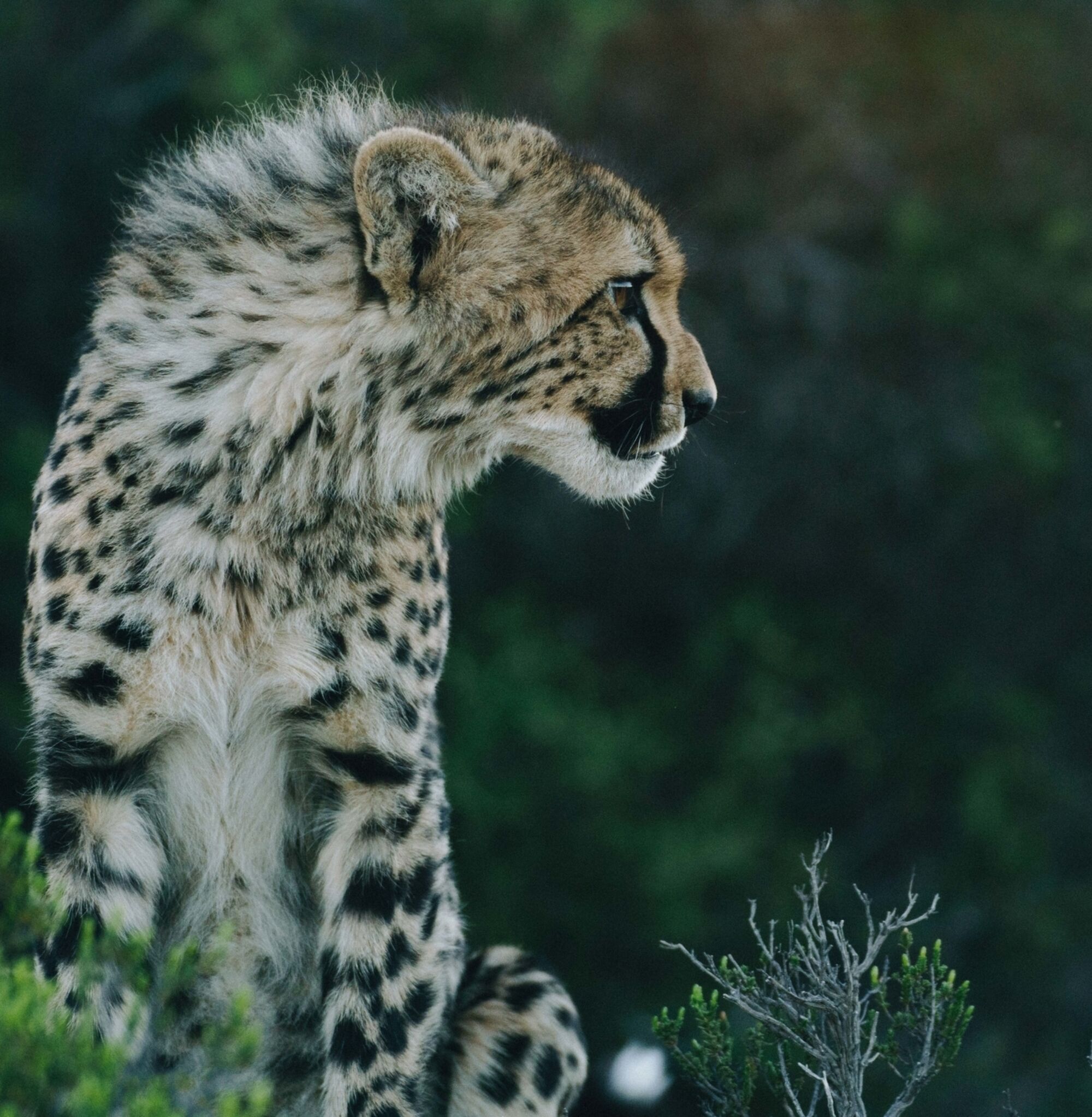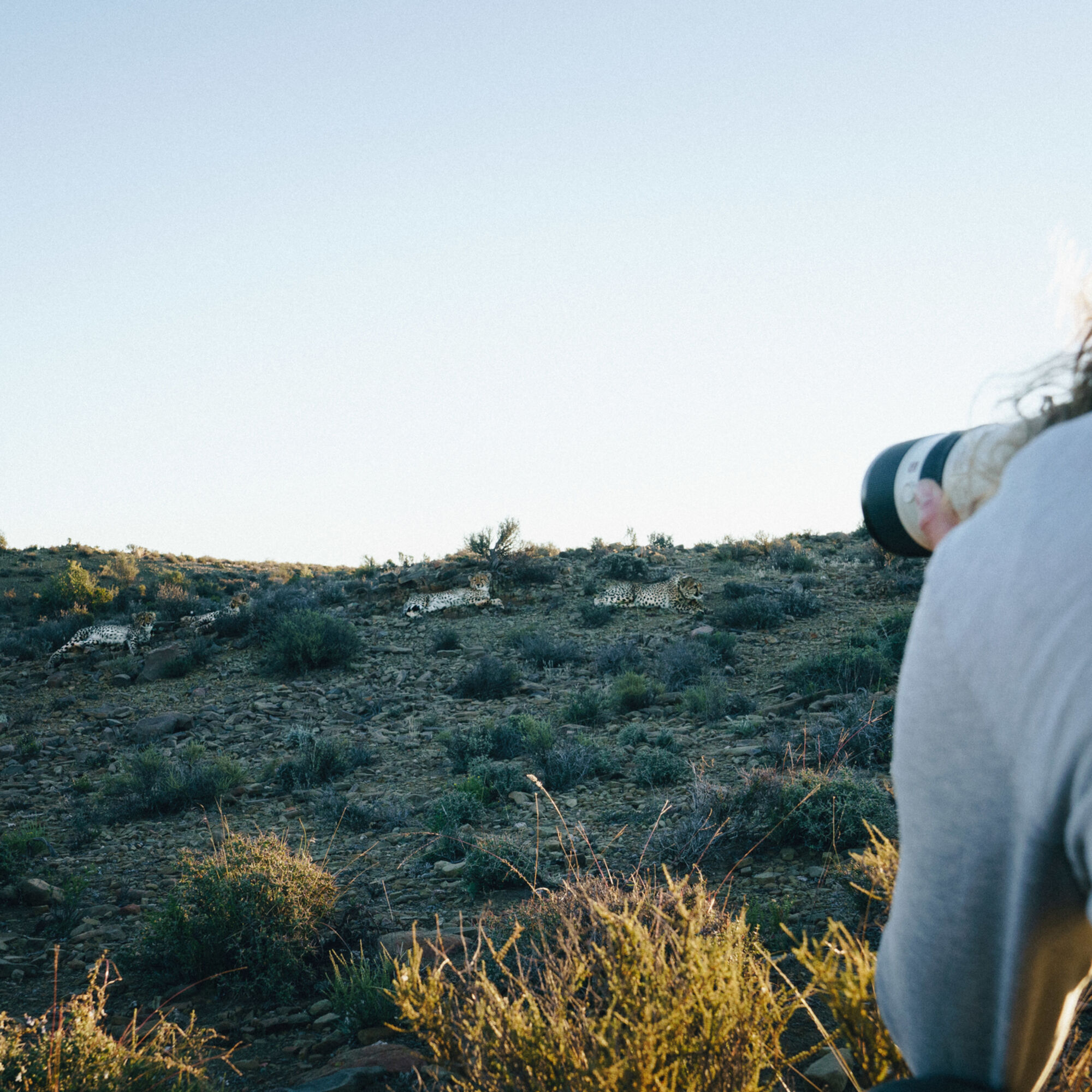The last few wild cheetah were sighted in the Karoo in the second half of the nineteenth century. Considered a pest and a threat to local livestock, the cats were promptly shot. With the dust that settled around their lifeless bodies, the era of free-roaming cheetah in the semi-desert region came to an end.
That was until fairly recently. Today, you’ll find a few of these athletic felines living among the scrub and gnarled bushes as they once did – thanks to a couple of rewilding projects. One such place is Roam Private Game Reserve, a 5,000-hectare scrubveld safari destination, set between Prince Albert and Beaufort West. I recently visited the reserve with a team from Wesgro to track cheetah on foot.
The reserve’s dusty grey-brown landscape is set beneath the bluest of skies and is home to animals like giraffe, kudu, gemsbok, zebra, buffalo, eland, springbuck, bat-eared fox, aardvard, meerkat and currently four cheetah.
“Why is cheetah conservation in South Africa not working?’
Donovan de Swart, Roam’s reserve manager, explained that this was the fundamental question asked at a conservation indaba held about 10 years ago, as we bumped along a jeep track in a Land Rover game-drive vehicle. The Swartberg mountains lay behind us and typically flat Karoo mesas in front. We were heading towards the area where the cheetah were last spotted.
“The findings at the conservation indaba were that our few remaining cheetahs were being kept in various reserves and game parks across the country in relatively small numbers. These groups had no access to the rest of South Africa’s population and no chance of strengthening the limited genetic diversity,” Donovan explained as he maneuvered the vehicle expertly through a dry riverbed.
As a fledgling reserve which opened in 2017, Roam introduced two male cheetahs in 2018, as part of an Endangered Wildlife Trust project. The brothers successfully adapted to running and hunting on the hard, rocky ground. They were so efficient at taking down their quarry that subsequently some game had to be restocked.
Following this, a female called uMusa was introduced and one (or both) of the males mated with her successfully. In 2020 three cubs – two male and a female – were born. The adult males were then moved to Mkuze Game Reserve in KwaZulu-Natal where they are able to mate with other females and strengthen the gene pool there.
We stopped on a rise. Donovan unfolded acoustic telemetry tracking equipment and listened to the beeps emitted from the uMusa’s collar. Giraffe on the hill across from us were staring at something. It was possible that it could’ve been the big cats.
Dovovan stopped a second time to listen. ‘They’re close by,’ he said. ‘Let’s head out on foot from here. If she’s not hunting, she’ll quite likely be lying under one of these sweet thorn bushes with the cubs.’
Donavon’s wife, Abigail, radioed from the vehicle she was in to say that she’d spotted them on the next rise, so we headed in that direction. We were instructed to stay together in the group and speak in low tones after the cats were visually identified. Donovan studied the mother’s body language and when he was satisfied that she was relaxed, we moved a little closer making sure to avert our gaze.
‘I want you to sit down very slowly, one at a time,' he said. We obeyed. What followed was a blissful encounter of watching the mother and her three sub-adult cubs, with enlarged stomachs after a successful hunt, from about twenty-metres away. There was a lot of stretching and yawning and eventually one of the curious youngsters came a bit closer to investigate.
We stayed still and took photos until the cheetahs regrouped in a small thicket and the light began to fade. Sundowners awaited on a table with a checkered cloth, next to the game vehicle. The light turned to orange and the nearby hills became a silhouette.
After chatting and laughing for a while in this expansive wilderness, Donovan began driving us back to where our vehicle was parked. Dusk gave way to night and the Milky Way made a brilliant appearance above. Cape hare’s darted along the road in front of the headlights and we saw a spotted eagle owl perched on a lone, vertical branch. I imagined that he closed his eyes slowly before opening them again as if nodding farewell.
DO IT:
Visit Roam - Besides cheetah tracking, game drives and walks, Roam offers accommodation at its lodge and also the explorer camp at competitive rates.



















